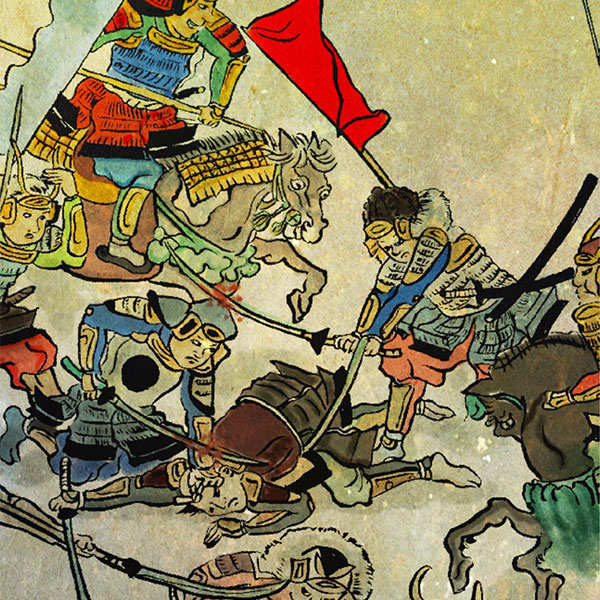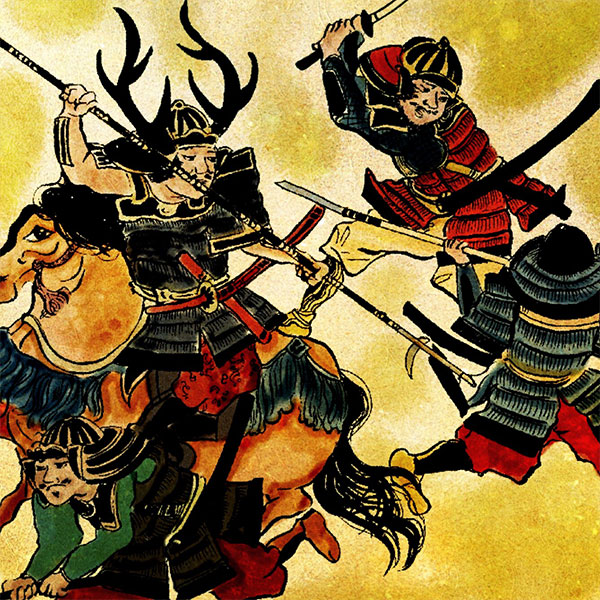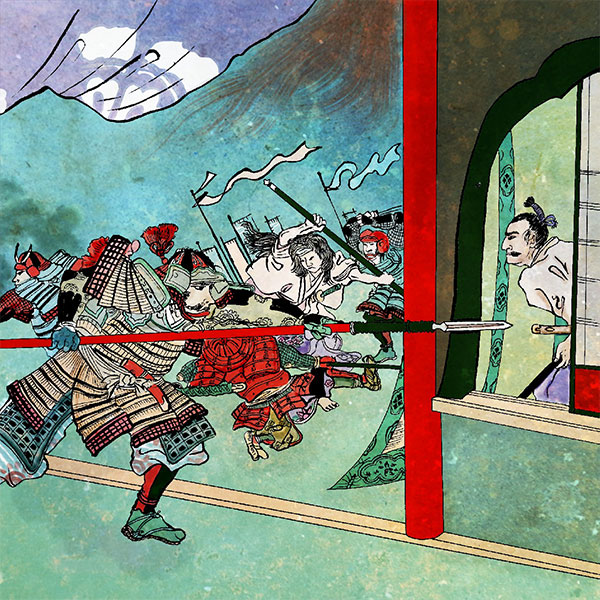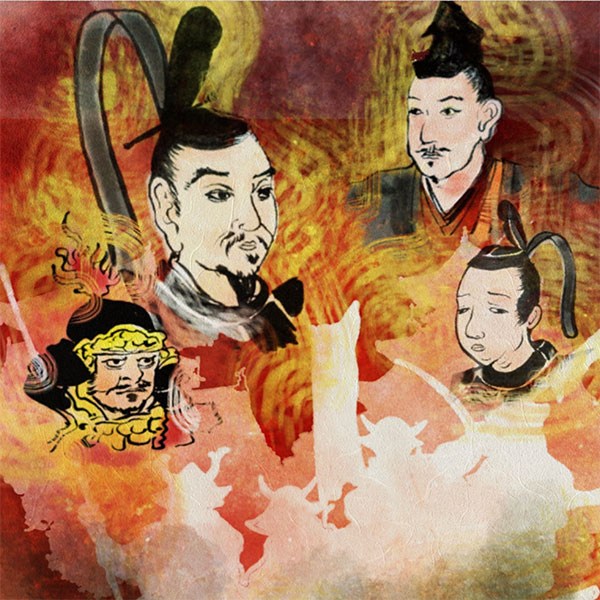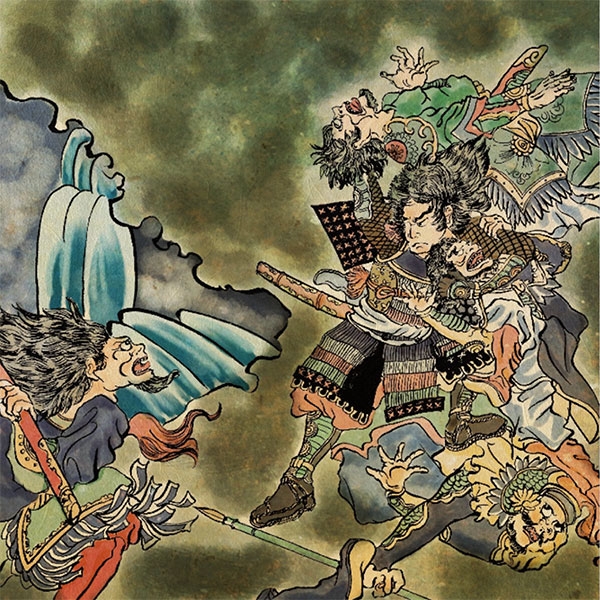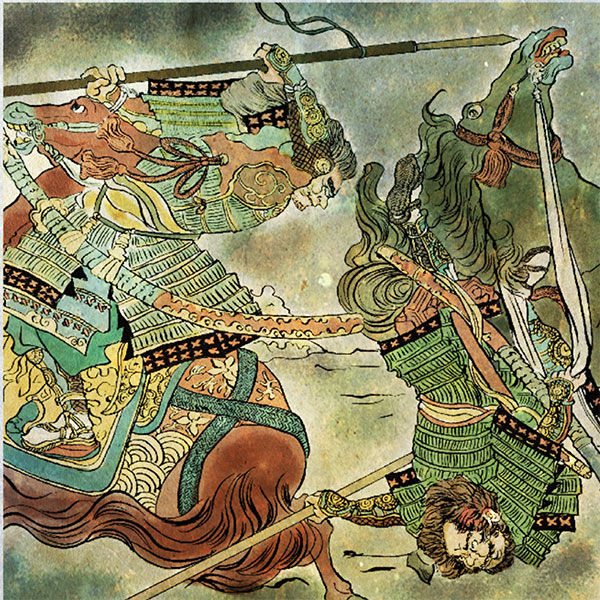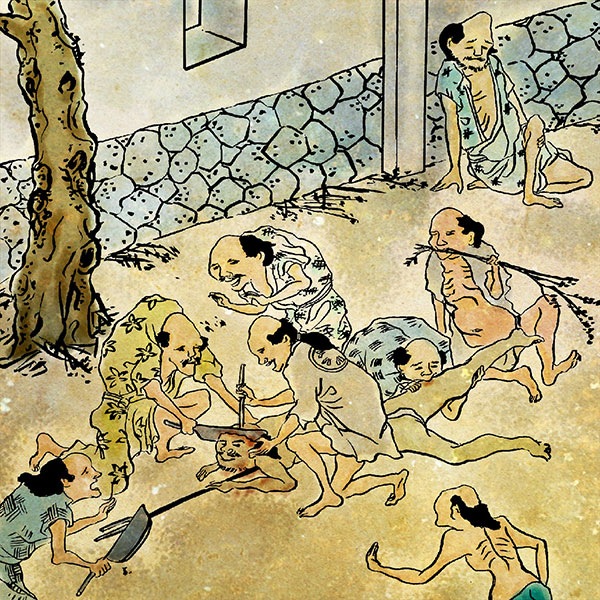Terumoto Mouri (1/2)Prince of the Chugoku region
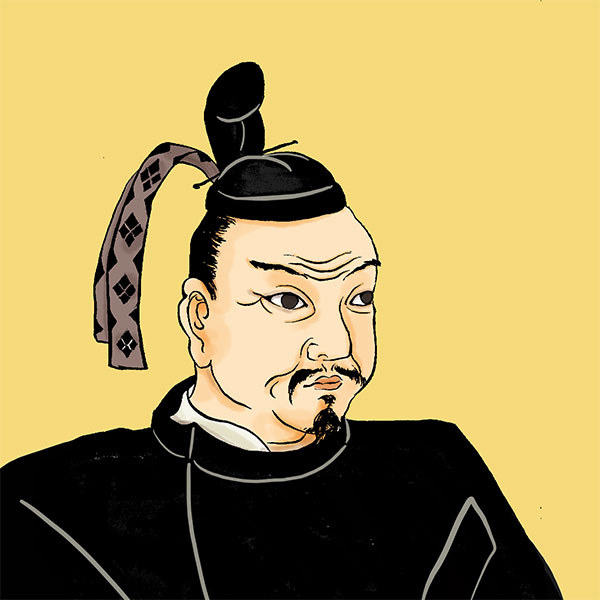
Terumoto Mouri
- Article category
- biography
- name
- Terumoto Mori (1553-1625)
- place of birth
- Hiroshima
- Related castles

Hagi castle ruins

Hiroshima castle

Osaka Castle
- related incident
During the Sengoku period, there was a feudal lord from Aki Province (present-day Hiroshima Prefecture) in the Chugoku region who grew to become a powerful force, Motonari Mori. Mori Motonari's grandson was Terumoto Mori. Terumoto opposed Oda Nobunaga, who rose to prominence in the Tokai and Kinki regions, and then became a vassal to Toyotomi Hideyoshi, who rose to prominence. Furthermore, at the Battle of Sekigahara, he was promoted as the general of the anti-Tokugawa Western Army. This time, we will take a look at Terumoto Mori, who lived through the Sengoku period mainly in the Chugoku region.
The Mori family, the leader of the Chugoku region
Terumoto Mouri was born into the Mouri clan. What kind of family was the Mouri family?
The origin of the Mori clan is Sumitsu Mori, the fourth son of Hiromoto Oe, an influential retainer of the Kamakura shogunate. The surname "Mori" that Suimitsu took was given to him from Mori-sho, Aiko District, Sagami Province, a territory he inherited from Hiromoto.
Suemitsu was defeated in battle, but his children inherited the territory in Echigo Province and Aki Province, and his descendants continued to exist as the Echigo Mori clan and the Aki Mori clan.
The Echigo Mori clan later split into the Hojo clan and the Yasuda clan, and during the Sengoku period they produced influential national figures such as Takahiro Hojo.
The Aki Mori clan moved to Yoshida Koriyama at the end of the Kamakura period. In the Muromachi period, they grew up as influential local feudal lords of Aki Province, following the Yamana clan and the Ouchi clan. Terumoto's grandfather, Motonari Mori, became the head of the family, and within one generation, he expanded his influence by incorporating people from surrounding countries and eliminating other factions.
Succession of family headship from Terumoto's upbringing
He was born in Aki Province in January 1553, as the eldest son of Motonari Mori, who later became a prominent figure in the Chugoku region, and the eldest son of Takamoto Mori (that is, Motonari's grandson). His childhood name was Kotsurumaru.
At the time Terumoto was born, the Mori family followed the Ouchi family, a major power in Suo Province (present-day Yamaguchi Prefecture). However, the Ouchi family was virtually destroyed due to a rebellion by their vassal Sue Harukata. In 1555, two years after Terumoto was born, the Battle of Itsukushima took place, and the victory of this battle brought great success to the Mori family.
However, when Terumoto was 10 years old, his father Takamoto suddenly died in 1563. Therefore, Terumoto succeeded to the headship of the Mori family under the guardianship of his grandfather Motonari. In the 8th year of Eiroku (1565), during the Genpuku ceremony at Yoshida Koriyama Castle, he received the epithet ``Steru'' from Yoshiteru Ashikaga, the 13th shogun of the Muromachi Shogunate, and began to call himself Terumoto.
After this Genpuku, with the help of his grandfather Motonari and his uncles (Mori Motonari's second and third sons) Harumoto Yoshikawa and Takakage Kobayakawa, the Mori family established a governing system.
Stabilizing hegemony in the Chugoku region
When Terumoto Mori gained the guardianship of Motonari and took over as head of the family, the Mori family was in conflict with the remnants of the Amago clan in the San'in region and the remnants of the Ouchi clan in Suo Province.
Meanwhile, in the Kinki region, Oda Nobunaga was expanding his power by supporting Yoshiaki Ashikaga, the 15th shogun of the Muromachi shogunate. At this point, the Oda family, which controlled the Kinki and Tokai regions, and the Mori family, which controlled the Chugoku region, avoided interfering with each other and allowed their respective forces to expand.
Therefore, Terumoto extended his reach to Mimasaka and Bizen Province (present-day Okayama Prefecture), and sought to expand his influence from the Chugoku region to northern Kyushu.
Meanwhile, in June 1571, Terumoto's grandfather Motonari, who had been his guardian, passed away. From there, Terumoto took charge of running the Mori family, supported by his uncles Motoharu Yoshikawa and Takakage Kobayakawa (Ryokawa Mori).
Conflict with the Oda family
In 1573, Shogun Yoshiaki Ashikaga parted ways with Nobunaga Oda, who had been in power. Nobunaga expelled Yoshiaki Ashikaga from Kyoto. However, at this point, both Mori Terumoto and Oda Nobunaga maintain an alliance, in order to avoid all-out war. While maintaining an alliance with the Mori family, the Oda family supported the Urakami family of the Sanyo region and the Amago family of the San'in region, which were in conflict with the Mori family, to keep the Mori family in check.
In 1576, Shogun Yoshiaki Ashikaga fled to Tomo, Bingo Province (eastern part of Hiroshima Prefecture), a territory of the Mori clan. While protecting Yoshiaki in Tomo, Terumoto decided to confront Nobunaga Oda, who supported the Urakami and Amago families, who were in conflict with the Mori family.
Terumoto Mori contacted Uesugi Kenshin in the Hokuriku region and Honganji Kongyo in the Kinki region to build a siege network for the Oda family, a siege system also known as the Third Nobunaga Siege Network. Terumoto, who had built a siege network, expanded his control to the east, and in addition to the Chugoku region, he also controlled parts of Sanuki Province (present-day Kagawa Prefecture) and Buzen Province (present-day Fukuoka Prefecture). He owned the largest territory of the Okimouri family. From this point on, the Mori family and the Oda family engaged in a back-and-forth battle between Harima Province (present-day Hyogo Prefecture) and Settsu Province (present-day Osaka Prefecture).
However, this prolonged battle took away the physical strength of the Mori family. Honganji Kongyo, who was in charge of the siege network, also made peace with Oda Nobunaga, almost surrendering, and left.
In 1582, with the Mori family at a disadvantage, Oda Nobunaga dispatched Hashiba Hideyoshi to confront the Mori family across Bitchu Takamatsu Castle, the Mori family's castle. Hideyoshi Hashiba faced the Mori family, but felt that he could not defeat the Mori family on his own and requested that Nobunaga Oda run for office. At this point, Nobunaga himself decided to go to war and decide between the two sides and the Mori family.
Toyotomi (Hashiba) served as a vassal to Hideyoshi
At the end of May 1582, Oda Nobunaga went to war to decide who would fight against the Mori clan. He stayed at Honnoji Temple in Kyoto, giving instructions to his subordinate military commanders on their march. Terumoto Mouri finds himself in a critical situation. However, the following June, Akechi Mitsuhide, a vassal of the Oda family, forced Nobunaga to commit suicide in Kyoto, known as the Honnoji Incident.
The first person to know about this was Hashiba Hideyoshi, who surrounded Bitchu Takamatsu Castle and faced the Mori clan. Hideyoshi asked Terumoto for a ceasefire while keeping the Honnoji incident a secret, and Terumoto accepted. The Mori clan later learned of the Honnoji Incident, but they kept their promise of a ceasefire and refrained from pursuing it. Hashiba Hideyoshi defeated Akechi Mitsuhide, who forced his master Oda Nobunaga to commit suicide after making a truce with the Mori clan, and gained an upper hand in the subsequent political struggle within the Oda clan.
In January 1585, Terumoto and Hideyoshi decided to allocate their territory and made peace. At this point, Terumoto Mori changed from an independent daimyo to a daimyo under the Toyotomi family. However, Terumoto, who owned most of the Chugoku region, was positioned as one of the most prominent daimyo in the Toyotomi government. In this way, Terumoto Mori ended the war with Oda Nobunaga and Toyotomi Hideyoshi that had been going on since the 4th year of Tensho.
The following year, in 1586, his uncle Motoharu Yoshikawa, one of the Mori Ryokawa who continued to support the Mori family, passed away. With the help of his remaining uncle, Takakage Kobayakawa, Terumoto contributed to Toyotomi Hideyoshi by dispatching troops to Kishu, Shikoku, and Kyushu under the Toyotomi government.
In the 17th year of Tensho (1589), construction of Hiroshima Castle began in order to move from Yoshida Koriyama, which had been the residence of the Mori clan, to the convenient location of Hiroshima.
In 1592, the Toyotomi family began sending troops to Korea. The feudal lords of the western countries were ordered to go to war, and the Mori family also dispatched troops. Then, in 1597, Ryokawa Mori's uncle, Takakage Kobayakawa, passed away. The following year, Toyotomi Hideyoshi also passed away.
Battle of Sekigahara
Now, in 1595, shortly before Toyotomi Hideyoshi's death, Mori Terumoto was appointed by Hideyoshi as the Five Elders. The Five Great Elders included Tokugawa Ieyasu, whose territory was in the Kanto region, and he was appointed to an important position supporting the Toyotomi family. Then, in 1599, when Hideyoshi passed away, Toshiie Maeda, also one of the five chief elders, passed away, and Tokugawa Ieyasu and Ishida Mitsunari, the magistrate of the Toyotomi family, came into conflict.
Terumoto sided with Ishida Mitsunari, and in addition, five elders such as Kagekatsu Uesugi and Hideie Ukita sided with Ishida, and the conflict intensified.
- related incident

- WriterTomoyo Hazuki(Writer)I have loved history and geography since my student days, and have enjoyed visiting historical sites, temples and shrines, and researching ancient documents. He is especially strong in medieval Japanese history and European history in world history, and has read a wide range of things, including primary sources and historical entertainment novels. There are so many favorite military commanders and castles that I can't name them, but I especially like Hisashi Matsunaga and Mitsuhide Akechi, and when it comes to castles, I like Hikone Castle and Fushimi Castle. Once you start talking about the lives of warlords and the history of castles, there's a side of you that can't stop talking about them.





